BY HARRY PINCUS | I see beauty in some of the graffiti, but most of it is ugly and hateful.
Soho, which I used to call So What, is perceived as a bastion of white wealth and privilege. And so, climbing up on a sidewalk shed and spray-painting things next to someone’s window, or beside the flowers next to a fancy gallery, is an act of aggression and defiance. They hate it here, but they feel compelled to come here and buy $15 ice cream cones and thousand-dollar sneakers.
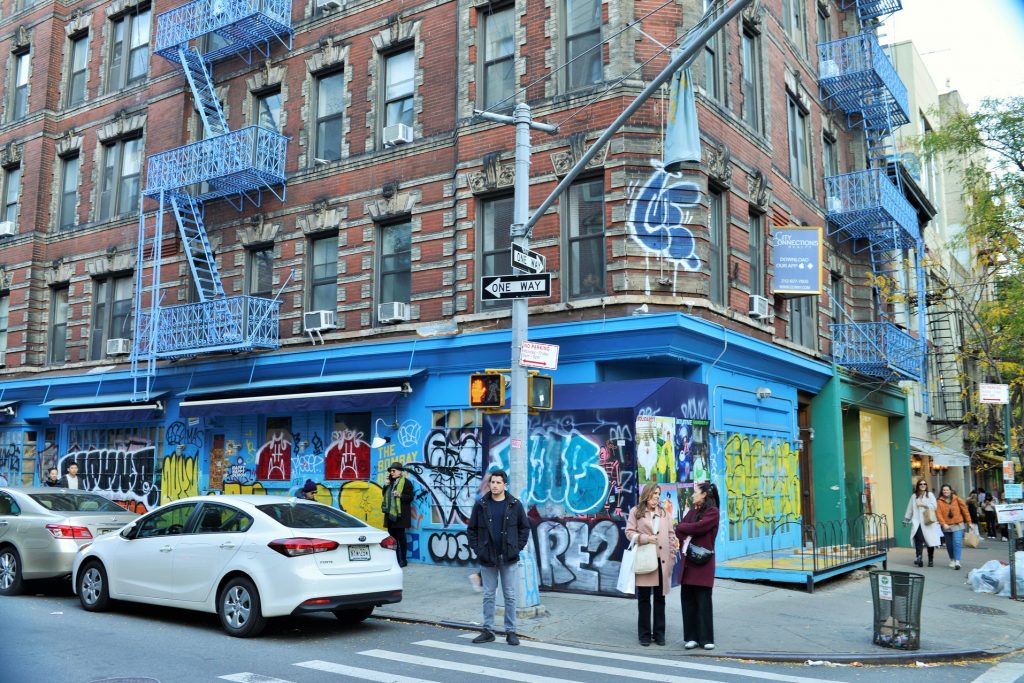
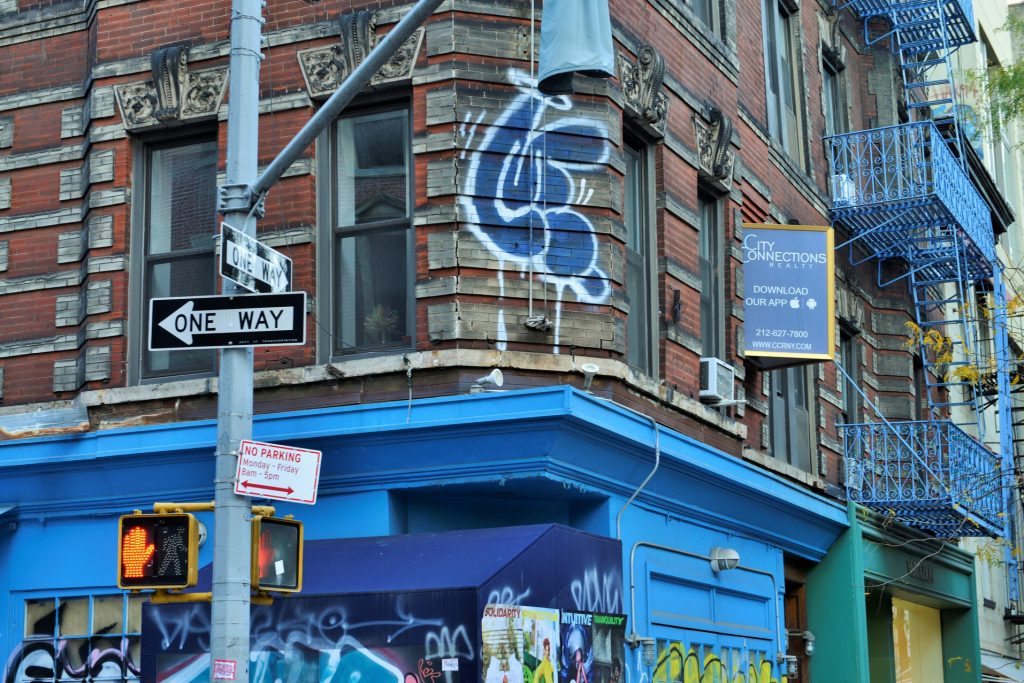
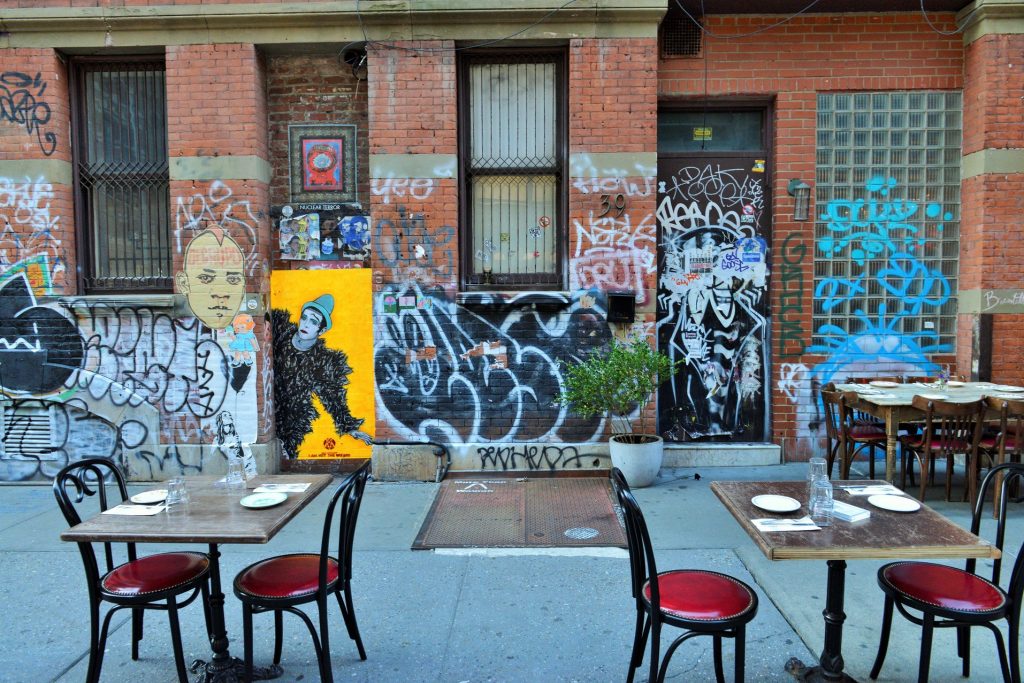
Soho was once a raggedy stretch where residents barely had plumbing. When someone painted the words “Piss Elegant” on a wall, or in the case of my old friend Rene, “I am the Best Artist,” it was funny. We were a community that knew what we were talking about.
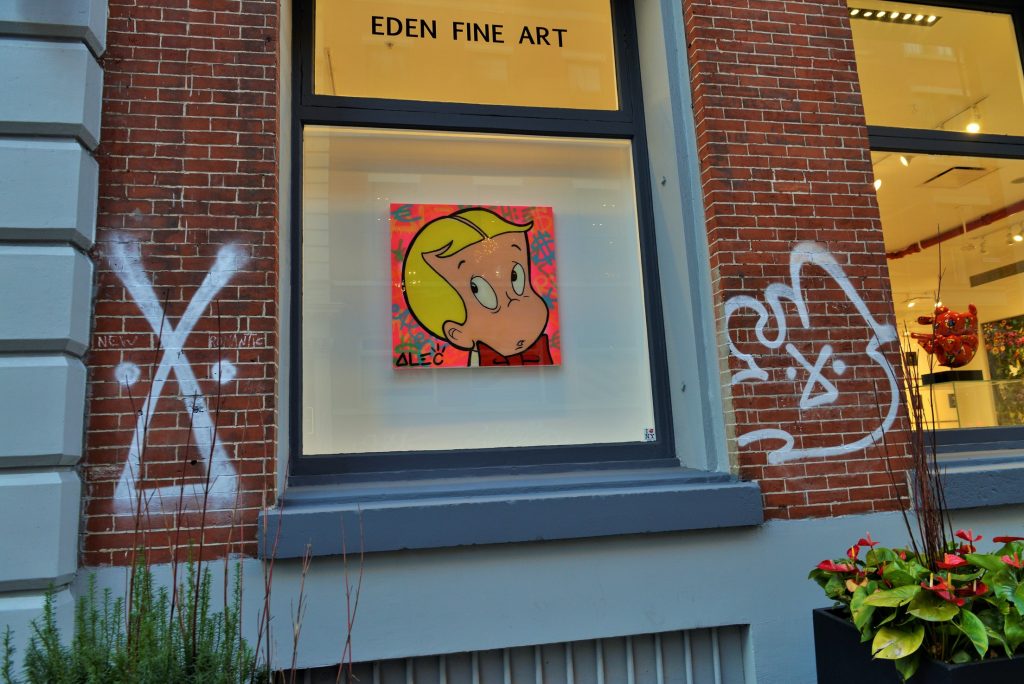
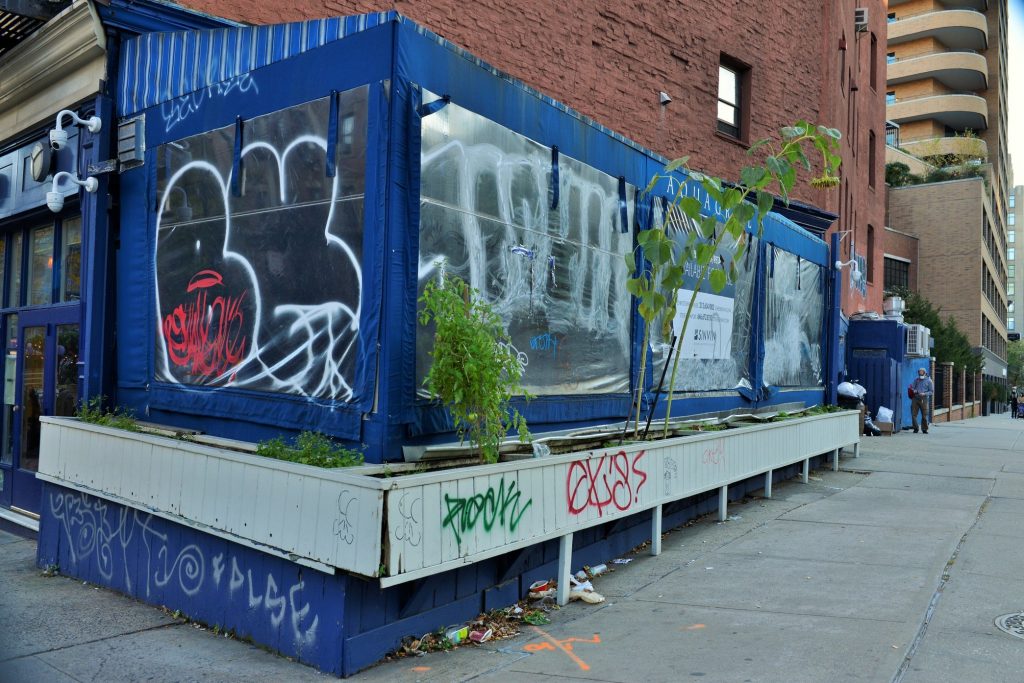
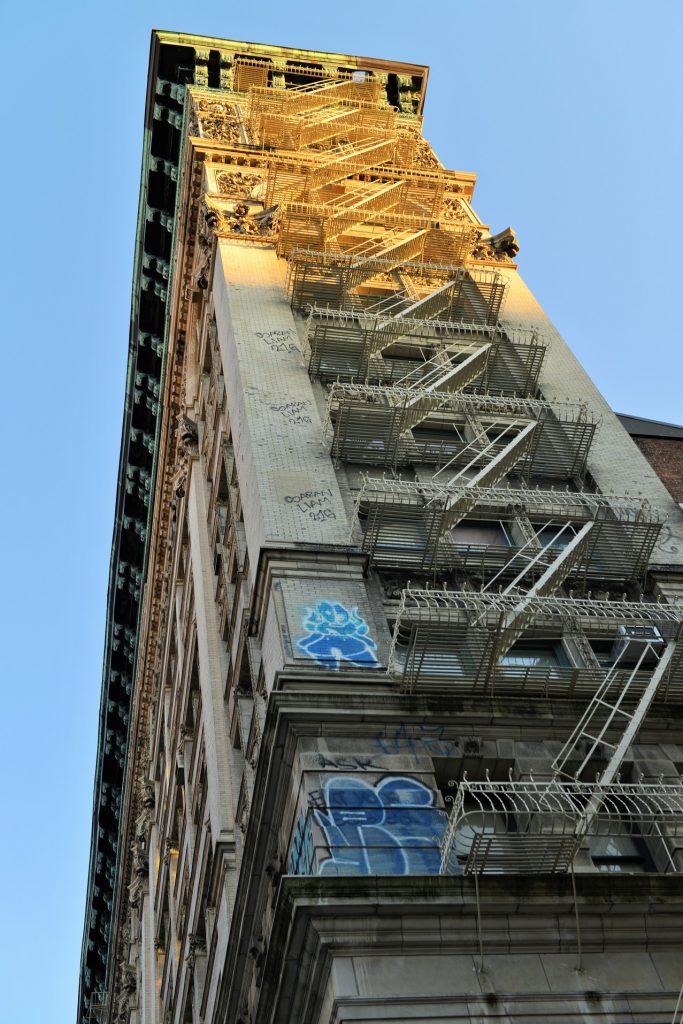
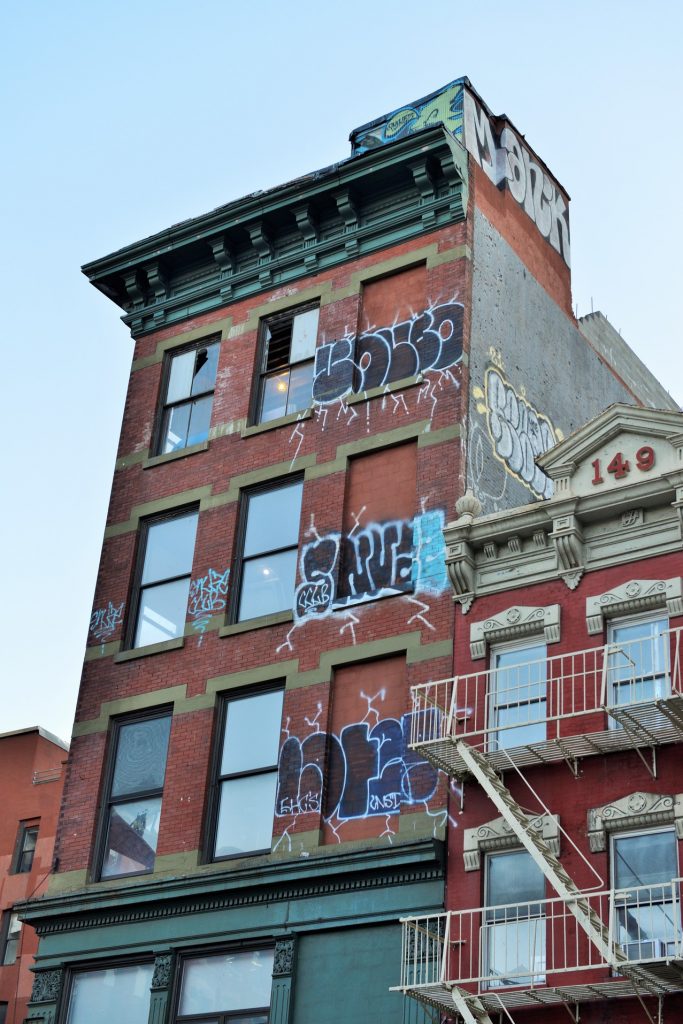
Today’s graffiti is a babble of graphic tongues that arrives via the subway. It is a form of energy, but it’s misdirected and it makes no sense. It has nothing to say beyond its need to declare the self-importance of the perpetrator, and its obvious contempt for the people who still live here or pay exorbitant rents to run rip-off businesses here. If you resent being ripped off and feel despised, why come here?
I wanted to photograph the remaining smear of the spray paint on the wall of God’s Love We Deliver just across the street. A woman dressed in her underwear, sunglasses and an open jacket stood in front of the wall and asked me for a dollar.

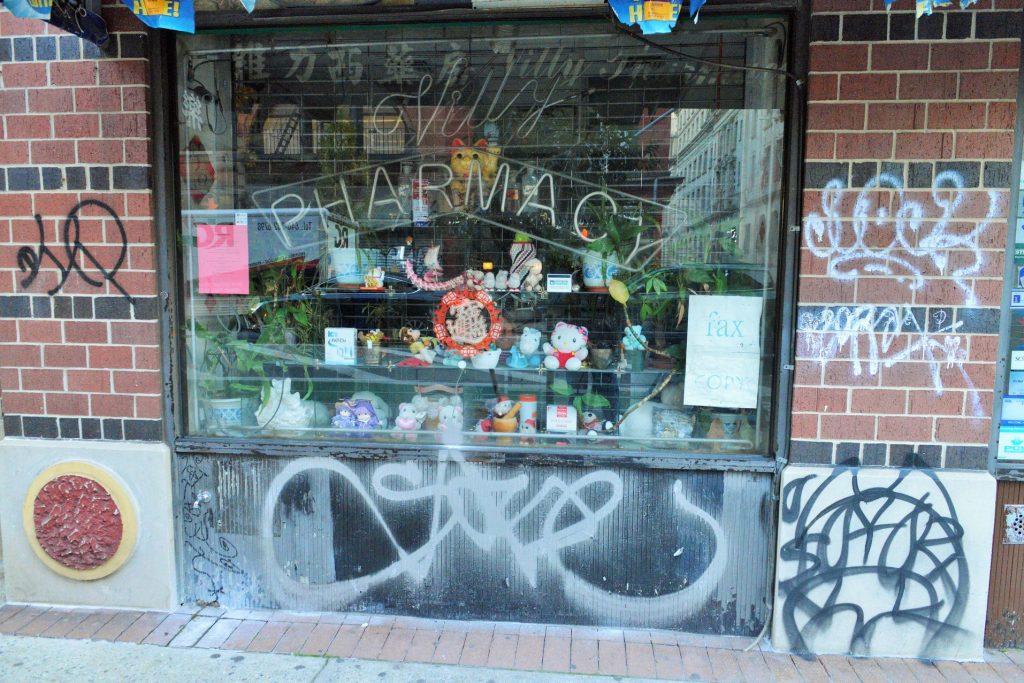
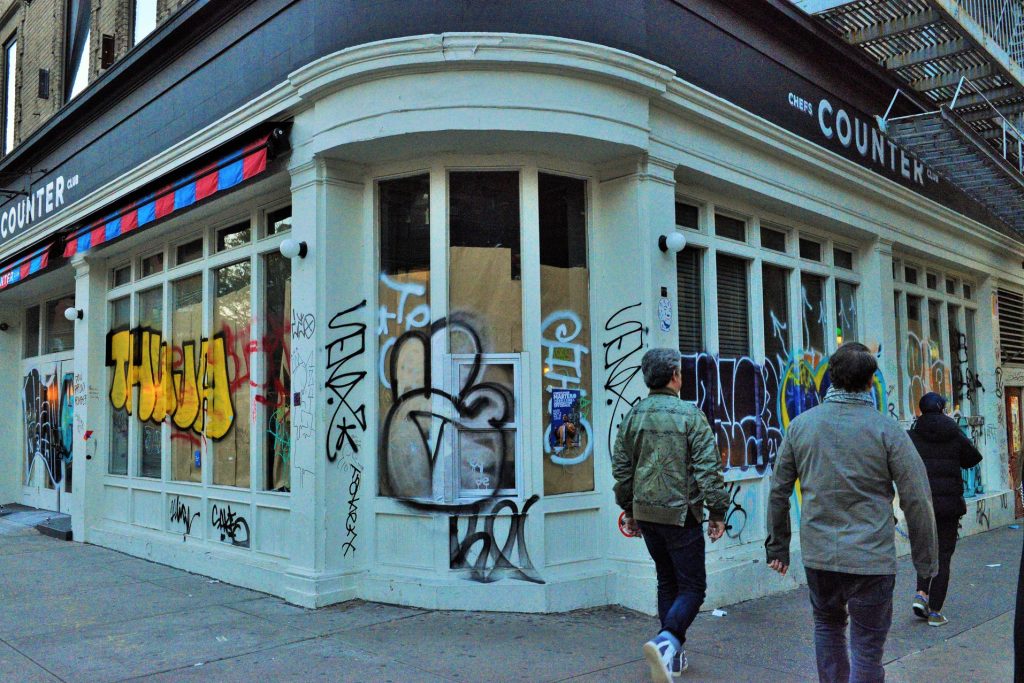
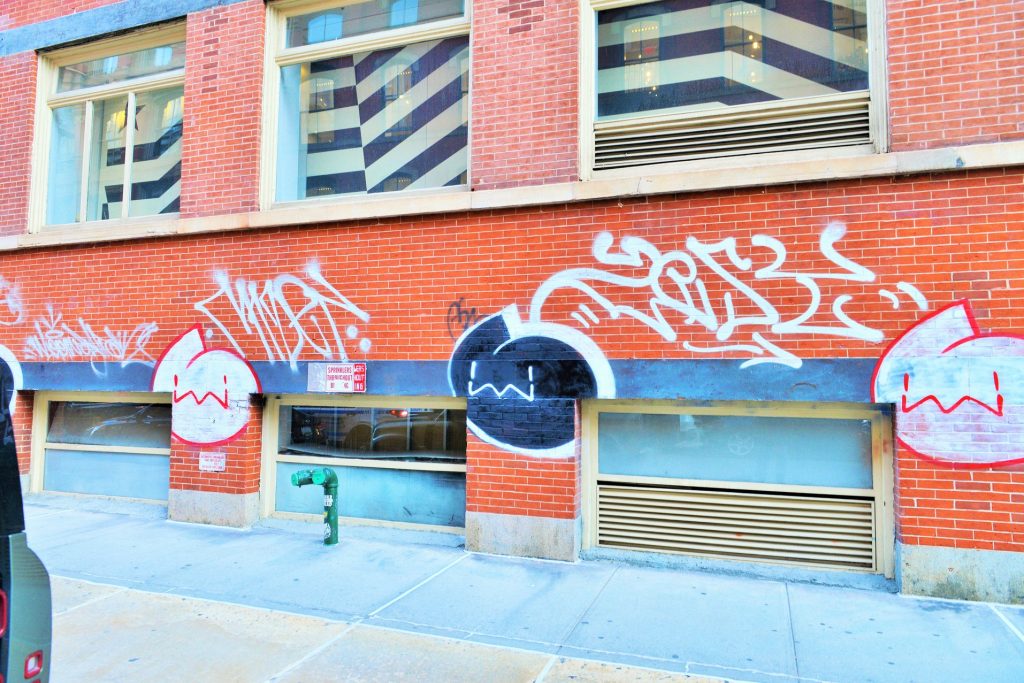
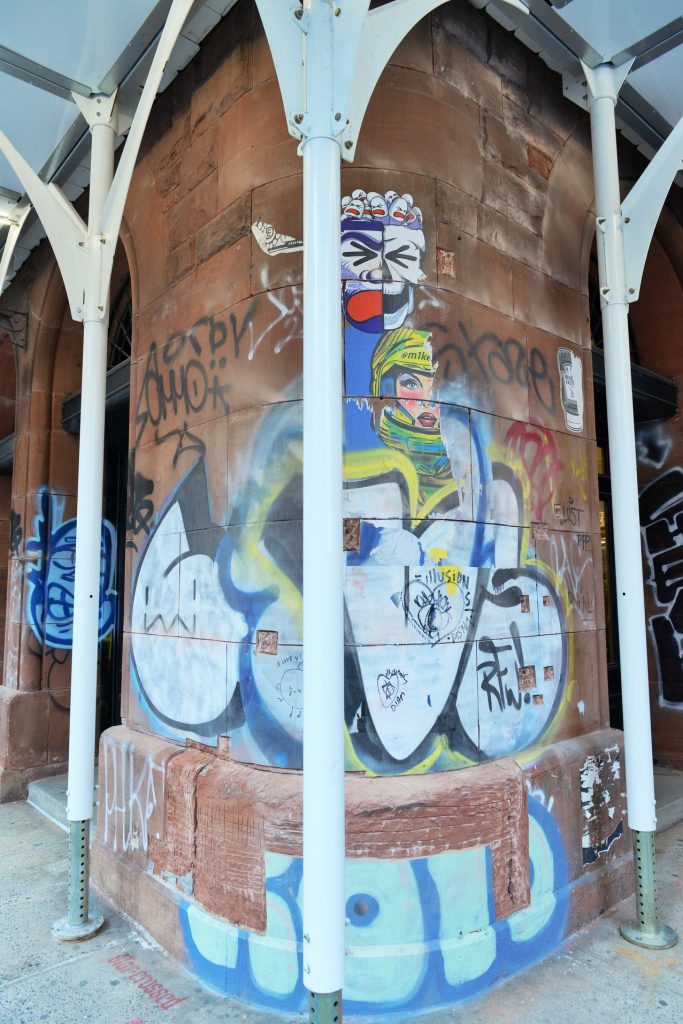
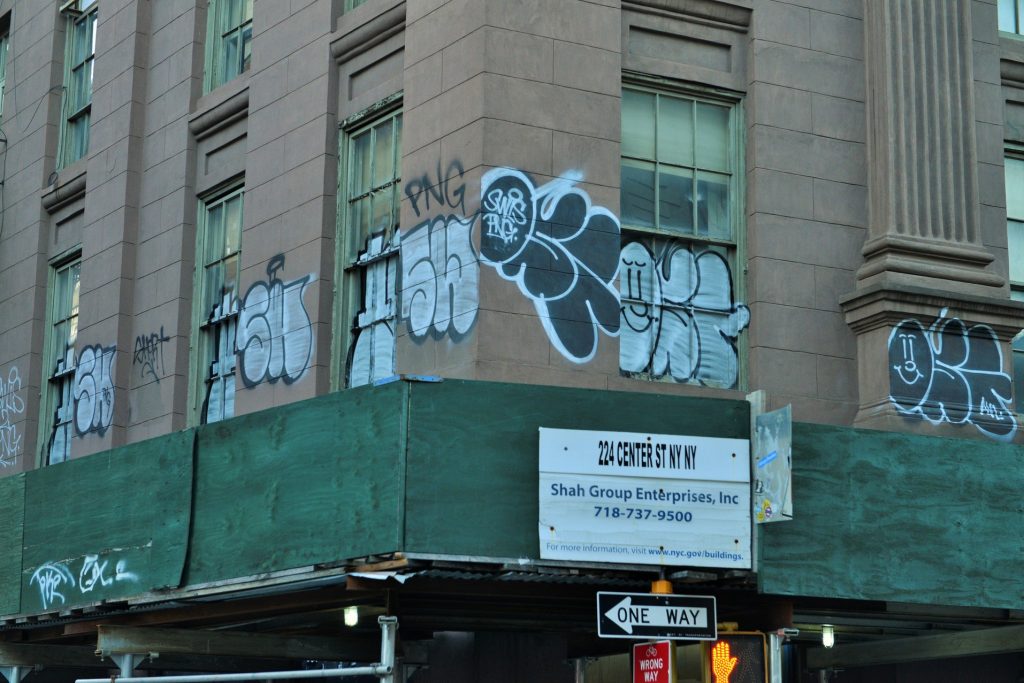
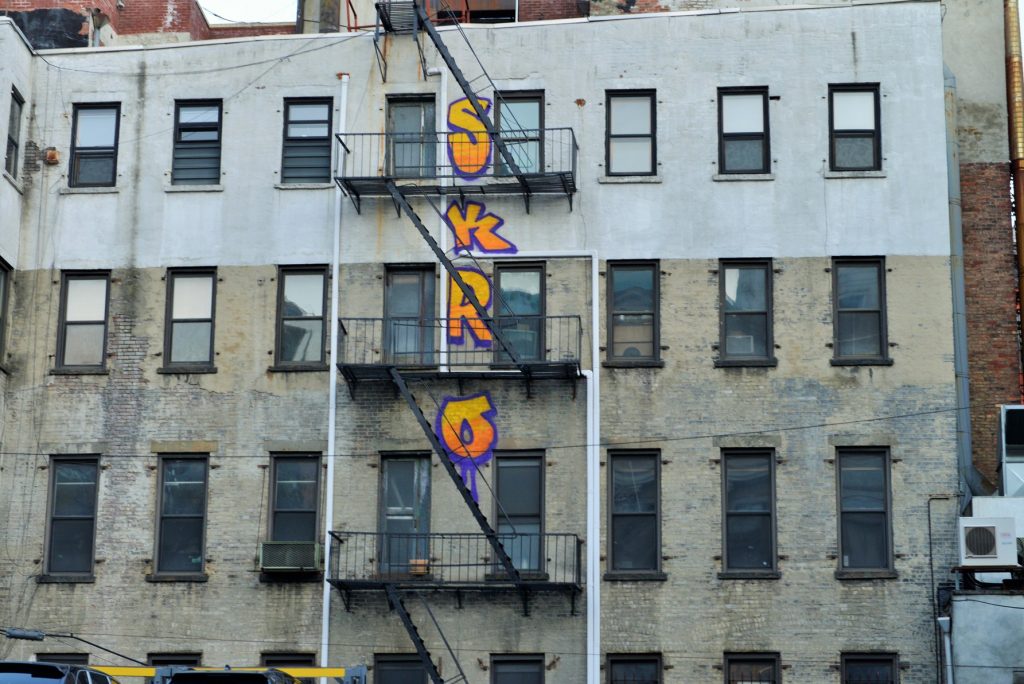
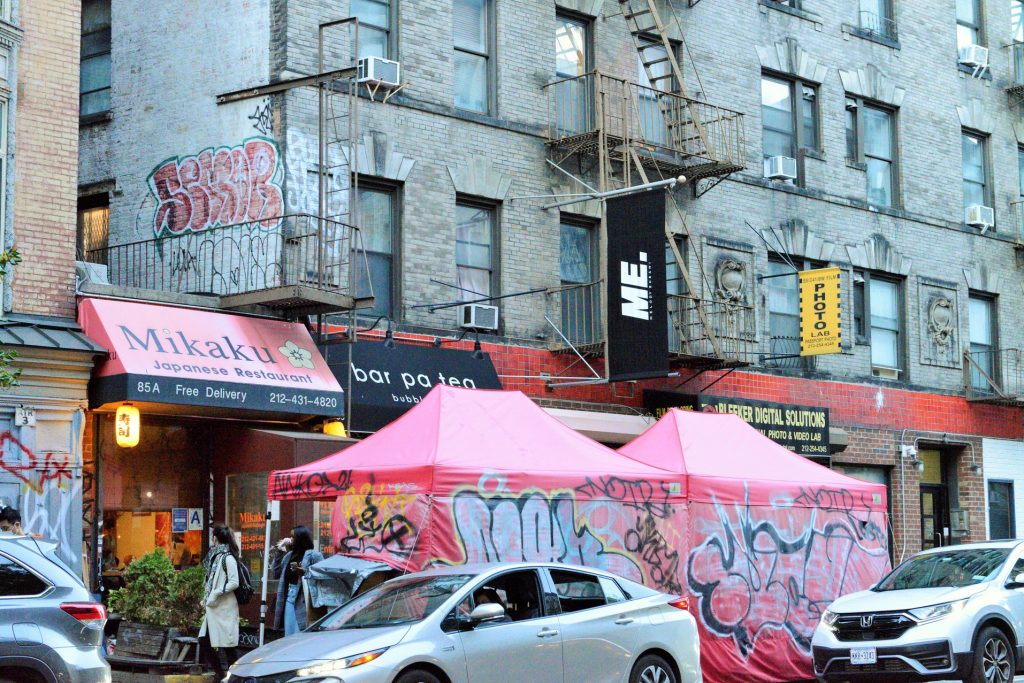

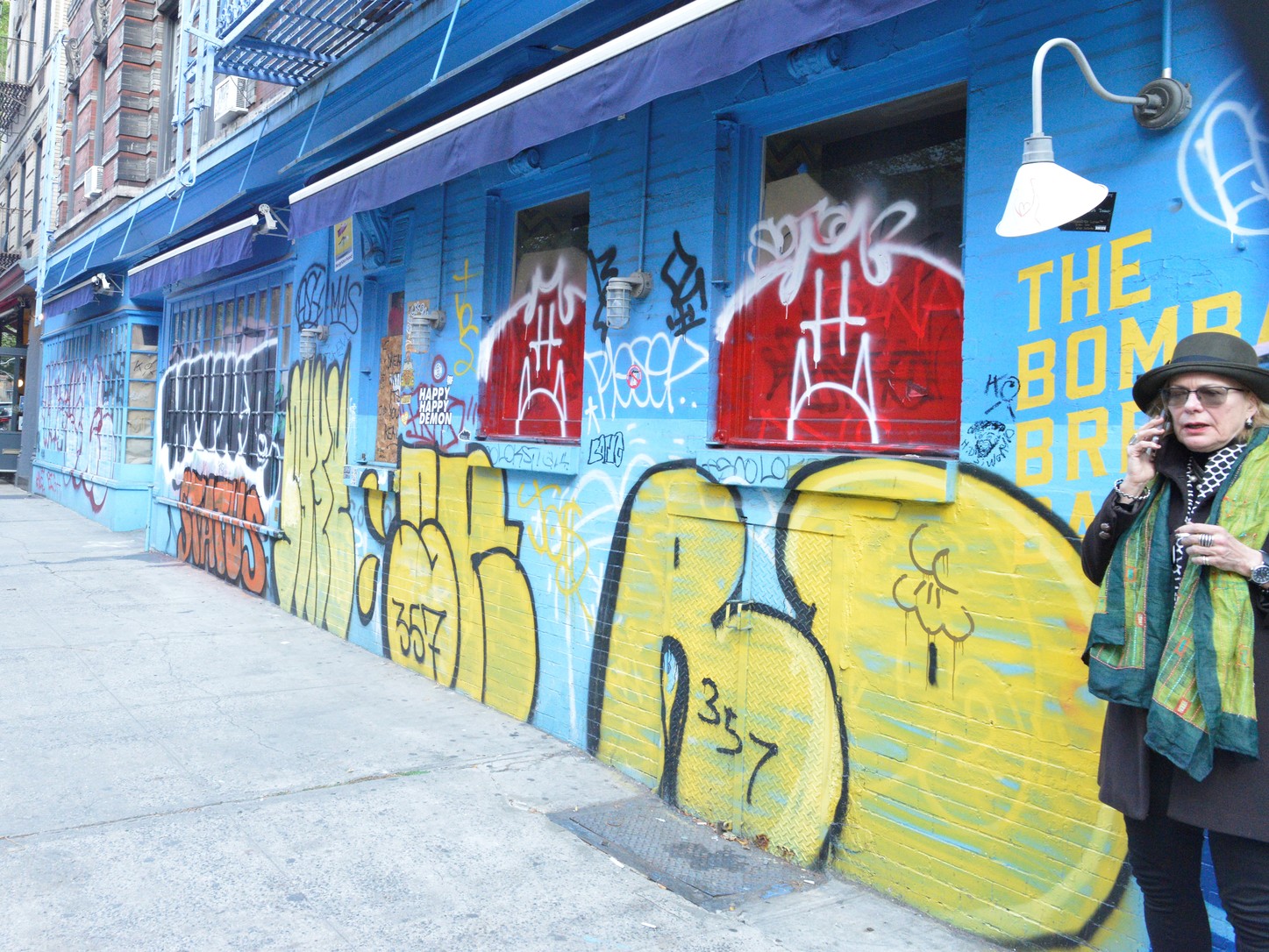
I”ve lived in SoHo for 31 years and been my building’s condo board president for 21 years. So I know what I’m talking about from firsthand experience.
The endless graffiti attacks in SoHo are by young men, mostly white, who have never owned property, much less have any concept of the very high cost of maintaining property. The few I have interacted with are not very bright, and as one might expect, do not have any respect for the property owners much less residents who actually live there.
Some I have talked with are aggressive and very defensive. They believe they have the legal “right” to spray graffiti. Seriously.
My building was seriously bombed over 13 times last year — multiple times with slogans like “F**k the police” and other neo-political slogans. We are well past last year’s daily protests now, yet we are still being hit with oil-based or enamel paint — splattering nonsense, doodles and hate.
Our building protocol is to report graffiti to the NYPD immediately — as instructed by them — so they can take photos and add the “tags” to their database. Yes, they keep track and encourage buildings to report graffiti before painting over it. Our super paints over it the next day. The special-order Tnemic paint for our facade costs $500 a gal.
I hate living in SoHo now. Because it has become a permanent nonstop mecca — not just for noisy nightly trash-tossing tourists — but because of the tsunami of ignorant, resentful, destructive young men who embrace the values of criminals and enjoy acting them out every chance they get.
It’s their “F.U.” world, we just live in it.
Some of the graffiti takes a long time to apply — like on a second story. Want to stop it? Try asking the NYPD to do more late-night patrols in SoHo.
Remember the scene in the movie Lean On Me, where Morgan Freeman orders the custodian to paint over the graffiti? He says “graffiti has to be painted over as soon as it goes up!” Leaving graffiti tags is a sign of neglect, because it shows the people that you don’t care.
I blame the graffiti on the building owners not maintaining the properties. In the first photo, the owners could easily paint over the graffiti, remove it from the window with solvent, and cover the glass with contact film, which is cheap and can be peeled off if it gets tagged (or someone puts etching cream on the glass.)
I know people love to see the brickface, but that may have to be painted over permanently. Powerwashing spray-paint off brick/stone is expensive. It has to be painted over.
I was walking by the community garden where I volunteer, and saw a moron about to tag the brick wall. I walked up to him, with a serious look, and in a clear voice, said, “Do you know who I am?” He was completely dumbfounded (must’ve thought I was a cop) and I said, “I’m the guy that comes here to maintain this property, I keep the sidewalk clean and take out the trash. Now, I need you to leave.” Sure, the guy could have a gun, but now is not the time for fear. I can’t afford to not say “please stop.” I use a firm voice, no yelling, but at the same time not an “is that okay with you?” tone.
Then again, not everyone is 6 foot 3 inches tall and ugly as hell.
Amen, Harry!
The graffiti is about a lot things, and so is art. For that matter, if there is hate directed at the wealthy, that’s understandable.
No one needs a thousand-dollar toilet seat, especially if it is fashioned out of wood from endangered forests, by craftsman who are being paid less than minimum wages.
It’s sad to see the beautiful old buildings, built by the skilled hands of previous generations, , desecrated by the twin blights of graffiti, ostensibly coming the young and the poor, and “Soho rezoning” presented courtesy of the old and priveleged.
I don’t know, who is painting the graffiti and don’t wish to implicate anyone in particular from my comments, which were assembled from several emails.
It’s sad to realize that “Soho,” which was a reclamation project for artists and other lost souls who couldn’t afford space anywhere else, has become a symbol of wealth and privilege, but it has. When I came here, friends politely reminded me that the room I had moved into was not an apartment, and family members refused to visit because the factory stall toilet in the hallway reminded them of the outhouse in the yard they had to endure in Brooklyn.
As someone who was very poor, I recognize the feelings that arise when you see others with something that you feel you will never be able to have. I recall being jealous of friends who could afford record players and who actually bought record albums. The only albums I had were left over from parties, or found objects, so to this day, I overcompensate by collecting cheap CD’s at flea markets and from street vendors. Of course, no one but geezers such as myself even listens to CD’s anymore!
It’s sad to see kids who should be saving their money instead waiting in line to get ripped off at the Nike Store or at a venue that sells fifteen-dollar ice cream cones. I understand it, though, and in defense of the fifteen-dollar ice cream cones, I’m sure that they are paying an exorbitant rent.
I don’t know what sneakers actually cost, aside from what I see on the “Pawn Stars” show, but I do recall my first thousand-dollar toilet seat.
I wanted to replace an old wooden toilet seat that I had reclaimed from the garbage in Brighton Beach, stripped of its paint and refinished, because it had brass hardware in the shape of a heart.
On Broome Street, at a place called Waterworks, about 25 years ago, I saw a lovely wooden toilet seat, and asked the salesperson if it could possibly cost a hundred dollars, as it appeared to have been marked. “Oh, no,” said the employee, “that’s a thousand dollars. We do have a lesser model for six hundred dollars, though.”
My wife saw some kids on skateboards painting more graffiti on our building yesterday, and asked them to stop. Fortunately, they did. A couple of weeks ago, the second-floor apartment in our building was broken into, by someone who was described as “white and about 21 years old.”
I don’t know who is responsible for the graffiti, and I suppose some of the actors want to think of themselves as artists. Others just want to make their mark and feel important, like everyone else around here.
I still believe that art should be based on a need to find the meaning of life, to improve the world and to create order out of chaos. By that reckoning, I don’t think that the handwriting we are seeing on the walls today is a sign of better days to come.
Harry, my friend, I have so many questions but will just ask one. Do you think the people doing the graffiti are the same people coming to buy $15 ice creams and $1,000 shoes?